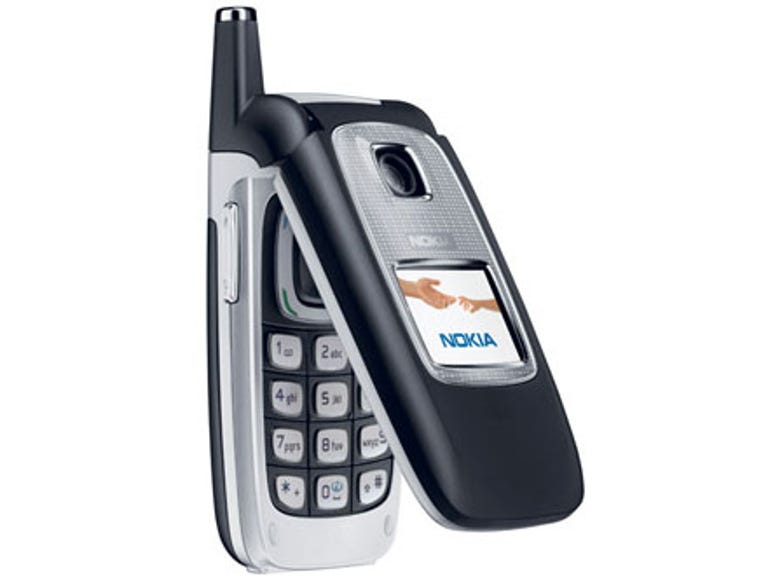 Why You Can Trust CNET
Why You Can Trust CNET Nokia 6103 review: Nokia 6103
An incremental improvement over the 6101, the 6103 is well-suited to those after a basic feature-set. Multimedia junkies and fashionistas need not apply.
Design
It's important to get one thing straight from the outset -- the 6103 isn't a fashion phone, a la the Motorola Razr or LG's KG800. Sure, beauty is in the eye of the beholder and the 6103 certainly isn't an eye-sore, but you won't see Paris Hilton strutting down Rodeo Drive with one in her clutches any time soon.
The Good
The Bad
The Bottom Line
The phone measures 85 by 45 by 24mm and weighs 97 grams. Instead of going for a long, thin, square look like Motorola did with the Razr, Nokia has decided to stick with a short, contoured yet chubby design. The phone fits the hand more comfortably this way, but those with a tendency to wear form-fitting pants may be in for a wrestling match when slipping the phone out of a pocket.
Another drawback of the 6103's design is the stubby antenna that jaunts out from the top of the device, which further detracts from its style-factor.
It comes in black and red colour schemes; we took a look at the black model, which boasts silver trimmings and a patterned face. Within the patterned face lie a built-in camera and an external screen for checking the time, missed calls and messages at-a-glance.
Flipping open the clamshell reveals a familiar five-way directional pad that's used for menu navigation. Flanking this are four buttons -- two for selecting menu items, and the obligatory "Answer" and "End" keys. The keypad touts large keys that are comfortable to use while also allowing for speedy text messaging.
There are only two external buttons -- a rocker on the left for adjusting volume levels and a button on the right for using the phone's push-to-talk feature.
Features
The 6103 supports GSM 850/1800/1900 networks, so it can comfortably be used worldwide. It also offers up Bluetooth and Infrared connectivity, which are now mandatory for any new phone release.
In addition to the external screen mentioned above, the phone also provides a 128x160 pixel internal display supporting up to 65,536 colours. This is far from state-of-the-art when compared to other phones on the market, which often boast up to 16.7 million colours. You'll only notice this when viewing images, but it's still a drawback nonetheless.
The 6103's audio playback capabilities are limited to FM radio. Sound quality is great, but unfortunately there's no MP3 playback functionality -- another multimedia feature that's extremely common these days. That said, even if there was MP3 support, the meagre 4.4MB of internal memory, coupled with the lack of expansion slots, severely limits the number of files you're able to store.
Not only is the phone a poor substitute for an iPod, it won't be replacing your digital camera either. It does boast an intergrated camera but, being a 0.3-megapixel VGA offering, it's fairly mediocre and shots are far from spectacular. The 640x480 shots are fine for basic multimedia messaging, but certainly don't expect to be making prints. Additionally, video clips can be recorded at a resolution of 128x96, but again the quality is quite poor.
The phone connects to a PC via a USB cable, enabling users to transfer images off the device or load up new ring tones (MP3 tones are supported). Unfortunately, this cable isn't included with the package, and will costs you an additional AU$84.
Messaging is an important part of the 6103's appeal. Users can send SMS, MMS, e-mail (IMAP 4, POP3, SMTP) and even audio messages to each other, but you'll need to enable this through your provider.
Finally, the device offers up a number of personal productivity and information management features. These include an alarm clock, calendar, calculator, timer, stopwatch, notes, to-do list and a voice recorder. Since the phone runs on J2ME, you can also load your own third-party applications and games.
Performance
We found the 6103's familiar Nokia interface/menu system both intuitive and simple to navigate during our tests. Call quality -- both regular and speaker-phone -- is adequate, and volume levels proved to be more than sufficient.
The battery will survive around four hours of talk time and 350 hours of standby time, which is pleasing. The lack of battery-guzzling multimedia features also enhances the phone's battery life somewhat.
All in all, with the exception of a slightly modified design and added Bluetooth support, the 6103 is extremely similar to its predecessor, the 6101. It's well-suited to those after a basic feature-set, but multimedia junkies and fashionistas need not apply.
